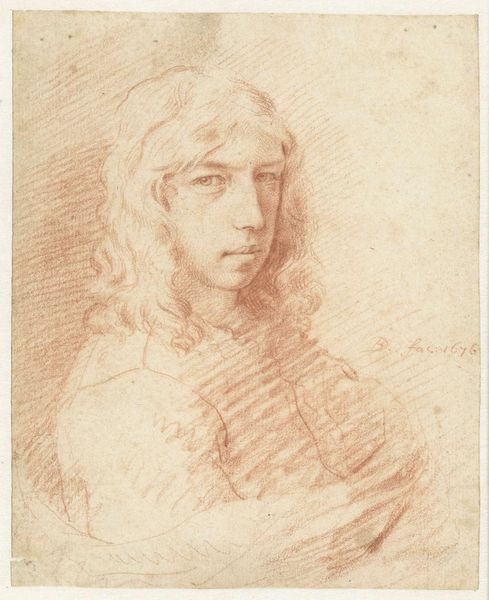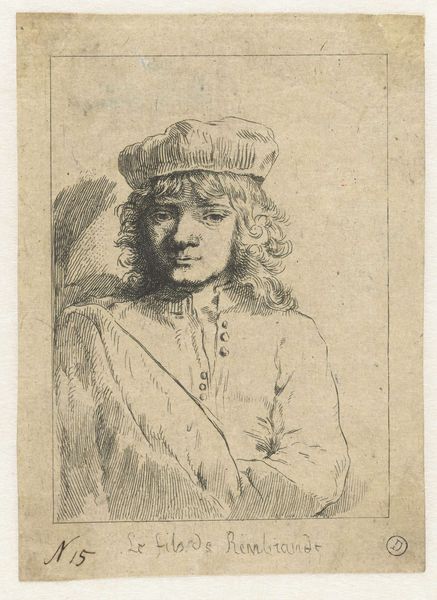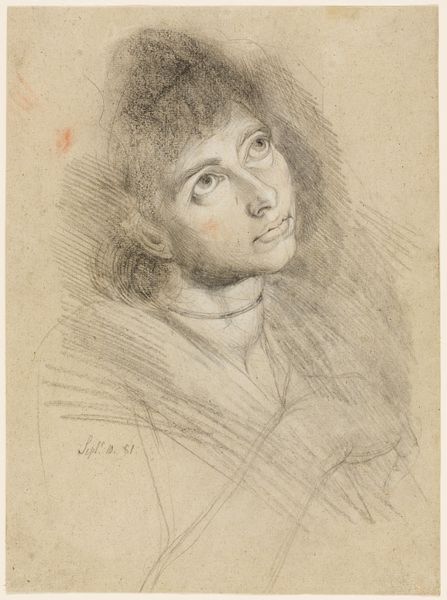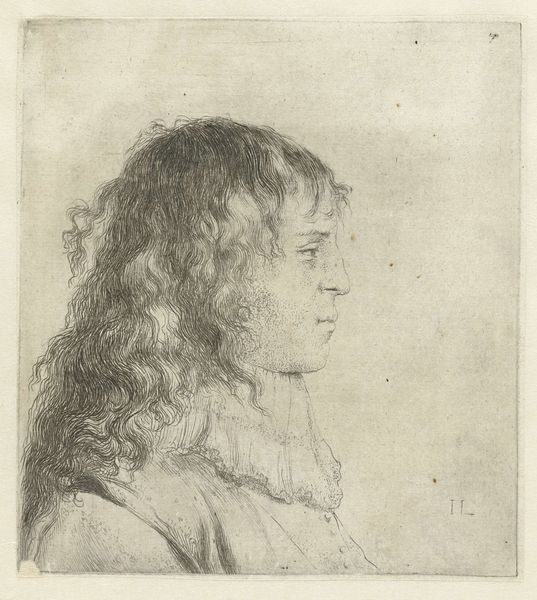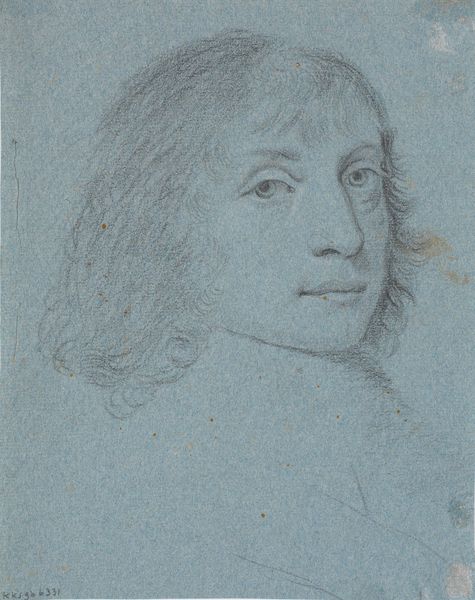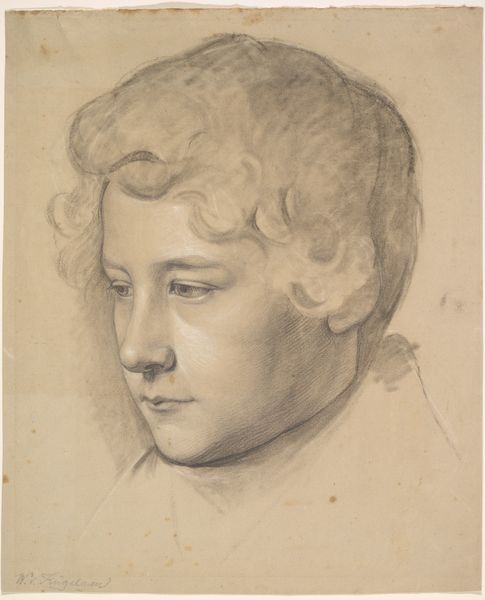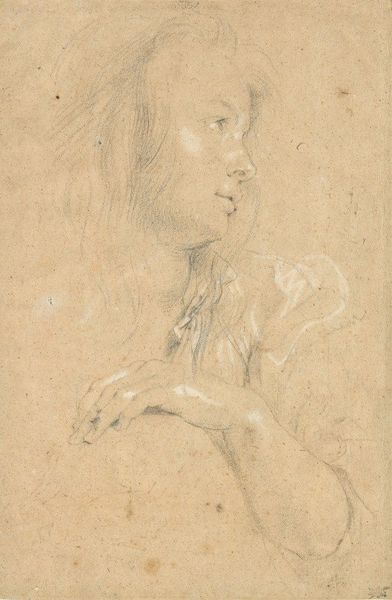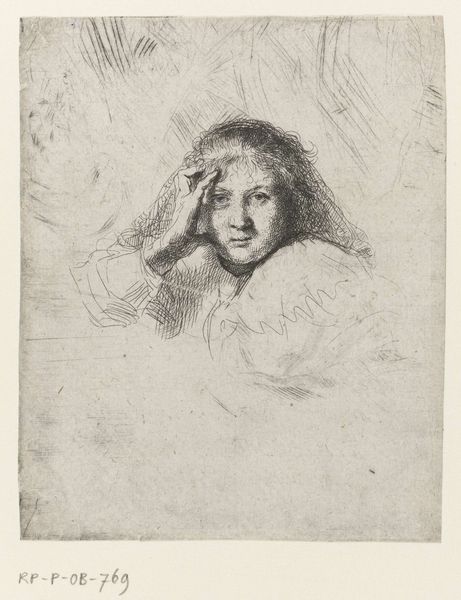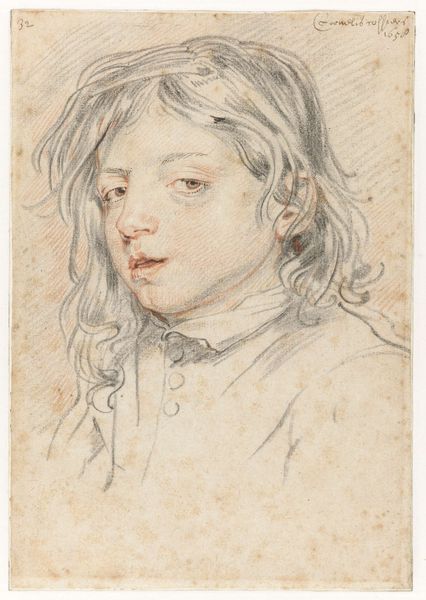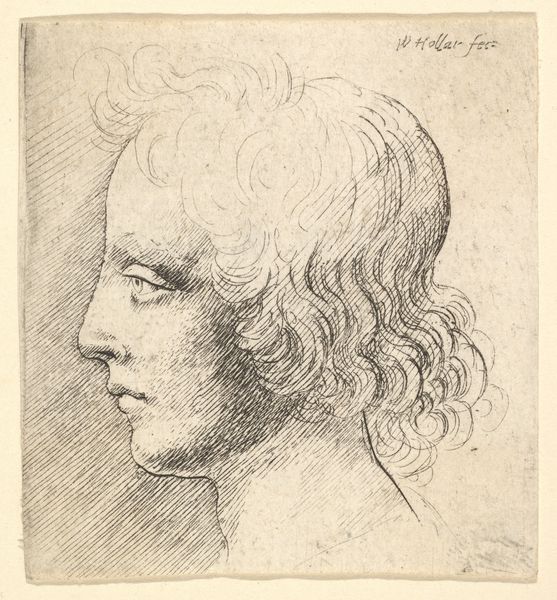
drawing, pencil
#
portrait
#
drawing
#
self-portrait
#
baroque
#
pencil
#
portrait drawing
Dimensions: overall: 31 x 22 cm (12 3/16 x 8 11/16 in.)
Copyright: National Gallery of Art: CC0 1.0
Editor: So, we're looking at a "Self-Portrait" by Sir Peter Lely, circa 1641, created using a pencil drawing technique. There's an arresting softness about it; almost a delicate gaze directed outward. What strikes you about this work? Curator: The self-representation here is fascinating, especially considering the era. Lely, though Dutch-born, became a prominent court painter in England. Does this drawing seem to adhere to the typical expectations of self-portraits in that period of intense political turmoil? Consider the visual language that conveys power versus introspection. Editor: I see the loose Baroque style but also an introspective quality, not at all bombastic or self-aggrandizing, unlike other Royal portraiture of the time. Is this softness perhaps a conscious choice? Curator: Exactly. Think about the political climate of the 1640s in England; the English Civil War was brewing. Commissioning trends are inextricably linked to political and cultural shifts. The subtle and possibly deliberate eschewal of blatant displays of wealth or power becomes particularly meaningful. It's an act of presenting oneself—a Royal Court artist, nonetheless—in a way that diverges from expected norms, speaking volumes in its seeming quietness. Editor: So it’s about subtly recalibrating what artistic identity means in a time of massive upheaval? Almost redefining visual power? Curator: Precisely. Lely presents a counter-narrative of sorts. One might even read it as a comment on the changing tides of authority. His role as a leading portraitist would mean that these artistic decisions might have significant ramifications for how he and his patrons wished to be perceived during political unrest. Editor: It’s incredible how much historical context informs a seemingly simple self-portrait drawing! Curator: Indeed. And it reminds us how the reception and intention behind artwork are constantly shaped and reshaped by both the immediate social moment, and through centuries of looking and re-interpretation.
Comments
No comments
Be the first to comment and join the conversation on the ultimate creative platform.
